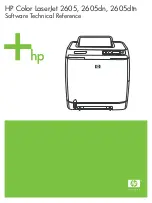
14
Enforcing Switch Security
Network Access Security
Secure Shell (SSH)
SSH provides Telnet-like functions through encrypted, authenticated transactions of the following
types:
■
client public-key authentication:
uses one or more public keys (from clients) that must
be stored on the switch. Only a client with a private key that matches a stored public key
can gain access to the switch.
■
switch SSH and user password authentication:
this option is a subset of the client public-
key authentication, and is used if the switch has SSH enabled without a login access
configured to authenticate the client’s key. In this case, the switch authenticates itself to
clients, and users on SSH clients then authenticate themselves to the switch by providing
passwords stored on a RADIUS or server, or locally on the switch.
■
secure copy (SC) and secure FTP (SFTP):
By opening a secure, encrypted SSH session,
you can take advantage of SC and SFTP to provide a secure alternative to TFTP for
transferring sensitive switch information.
Refer to the chapter titled “Configuring Secure Shell (SSH)” in the
Access Security Guide
for your
switch model. For more on SC and SFTP, refer to the section titled “Using Secure Copy and SFTP”
in the “File Transfers” appendix of the
Management and Configuration Guide
for your switch model.
Secure Socket Layer (SSLv3/TLSv1)
This feature includes use of Transport Layer Security (TLSv1) to provide remote web access to the
switch via authenticated transactions and encrypted paths between the switch and management
station clients capable of SSL/TLS operation. The authenticated type includes server certificate
authentication with user password authentication.
Refer to the chapter titled “Configuring Secure Socket Layer (SSL) in the
Access Security Guide
for
your switch model.
Traffic/Security Filters
These statically configured filters enhance in-band security (and improve control over access to
network resources) by forwarding or dropping inbound network traffic according to the configured
criteria. Filter options and the devices that support them are listed in the following table:
















































